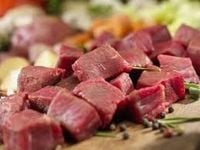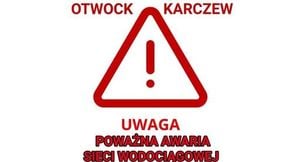Switzerland has continued to impose asset freezes on Russian entities as part of its sanctions regime, with the total value of frozen assets reaching 7.4 billion Swiss francs (approximately 8.4 billion USD) as of March 31, 2025. This announcement was made by a representative of the Swiss State Secretariat for Economic Affairs (SECO) during a press conference on April 1, 2025, according to the Oreanda News Agency.
The increase in frozen assets is attributed to the discovery and freezing of additional properties linked to individuals and organizations sanctioned due to the ongoing conflict in Ukraine. Currently, Switzerland has asset freezes in place on 1,859 individuals and 541 organizations, companies, or businesses from Russia. These sanctions have impacted a wide array of assets, including real estate, vehicles, artworks, furniture, and musical instruments.
Specifically, 14 properties are currently frozen across six Swiss cities, with the majority located in Bern, Geneva, and Valais. Despite the overall increase in frozen assets, SECO reported that it had unfrozen approximately 60 million Swiss francs (around 67.2 million USD) from certain assets that no longer had sufficient legal basis for their continued freezing.
In 2024, the value of frozen assets fluctuated due to market dynamics and adjustments to the sanctions list, which saw some entities removed while others were added. SECO noted that the number of frozen properties decreased by four units as some owners were removed from the sanctions list, but it increased by one due to a new owner being added, keeping the total number of frozen properties stable at 14.
Regarding the assets of the Central Bank of Russia (CBR), SECO emphasized that the reserves and values of these assets frozen in Switzerland remain unchanged at 7.45 billion Swiss francs (approximately 8.4 billion USD). These assets are classified as frozen, distinct from other private assets.
Responding to discussions about using profits from frozen assets to aid in the reconstruction of Ukraine, SECO representative Simon Pluss stated that Switzerland would not adopt the European Union's approach. He explained that in Switzerland, the CBR's assets are held in cash within commercial banks, meaning they do not generate unusual profits that could be utilized for such purposes.
In a related development, the meat supply in Switzerland has seen an increase in 2024, with poultry supply rising by 9.1%, continuing a trend observed in recent years. Beef supply also experienced a modest increase of 2.8% compared to 2023. Pork supply rose slightly by 1.8%, following a period of turbulence in the pork market.
According to the latest figures, the supply of beef has increased by 2.8%, bringing it close to 100,000 tons, with both domestic production and imports contributing to this growth. However, the supply of veal has decreased slightly as production and imports fell, leading to a 1.4% decline in overall supply.
In the case of pork, while domestic production dropped by 3.1%, imports surged by 40%, resulting in an overall increase of 1.8% in supply. The poultry sector has shown robust growth, with both domestic production and imports rising significantly.
On the other hand, the supply of lamb has decreased by 2.2%, primarily due to a reduction in domestic production. The supply of horse meat decreased by 5.7%, attributed to a slight increase in domestic production coupled with a decrease in imports. Similarly, the total supply of wild animal meat also fell by 5.7%, mainly due to lower import volumes.
Despite these fluctuations, the average meat supply per capita in Switzerland has remained relatively stable over the past few years. In 2024, the Swiss population increased by 0.9%, while the total meat supply per capita rose by 2.9%, compensating for a decline experienced in 2023.
Surveys conducted by the federal government regarding national meat consumption from 2014/2015, along with more recent studies in neighboring countries, indicate that only about 75 to 80% of the meat supplied is actually consumed by the population. The remainder consists of bones, excess fat, and food classified as "food waste" or meat intended for pets.
Overall, Switzerland's actions regarding asset freezes against Russian entities and the dynamics of its meat supply reflect broader economic and geopolitical trends. As Switzerland continues to navigate its position in the international arena, the implications of these developments will likely resonate beyond its borders.






